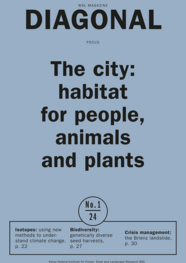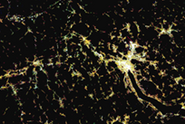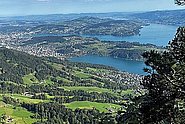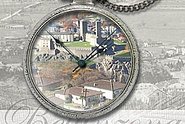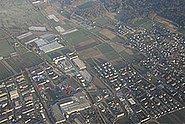
Urban Development: Making Economical Use of the Land ¶
The configuration and spread of villages and cities affect biodiversity and people's quality of life. We analyse settlement development and its consequences. In addition, we identify which policy instruments and measures can be used to manage it.
Contents ¶
Cities and villages in many regions of Switzerland have been growing for years, primarily at the expense of agricultural land and near-natural habitats. Many areas are not densely built up, but are dominated by loosely spaced, low-density building projects with extensive green spaces. This type of construction is not an economical use of the land, as it requires ample surface area. If land consumption is widely dispersed as well, then experts refer to this as urban sprawl. We study the causes of land consumption and urban sprawl and determine how they can be stopped and contained.
Research into the Sustainable Development of Settlements ¶
Experts agree that the development of settlements in Switzerland exhibits many negative effects. For example, it affects biodiversity and is responsible for the disappearance of recreation areas for the general public. Among other things, the "Spatial Requirements of Man and Nature" research programme examines such consequences. We also analyse the economic, political and social drivers of the development of settlements and identify the policy instruments and measures that can be used to control them. For this purpose, we scrutinise cities and municipalities which are now denser and more compact than before, thus utilising the land in a more economical manner.
The development of settlements encompasses a variety of aspects: social, planning, political, economic and ecological. WSL researchers from diverse disciplines work together to address the various aspects. They also involve representatives from planning offices, authorities and government and regularly exchange information with them. This is the only way to ensure that their research not only serves the purpose of gaining scientific insight, but also provides a decision-making basis for spatial planners as well as for the responsible parties in municipalities and cantons.

